It typically starts with a meeting with campaign staffers and usually ends without incident — a presidential candidate striding off stage and being whisked to the next stop on the campaign trail.
But the U.S. Secret Service’s advance planning for what outwardly seems like a routine political event is actually an intricate, multilayered process. It typically involves several specialized and senior agents strategizing, assessing and approving a detailed protection mission behind the scenes for days ahead of time, according to five former agents and one current one who have been directly involved in such planning.
For an outdoor campaign event, a comprehensive security plan put into place by the agency generally runs smoothly, said the former agents, some of whom spoke anonymously to discuss security practices.
But last Saturday’s campaign rally that turned deadly in Butler Township, Pennsylvania — with multiple shots fired at former President Donald Trump and into a crowd, killing one man and critically wounding two others — underscores what can go wrong despite that detailed planning, the ex-agents said.
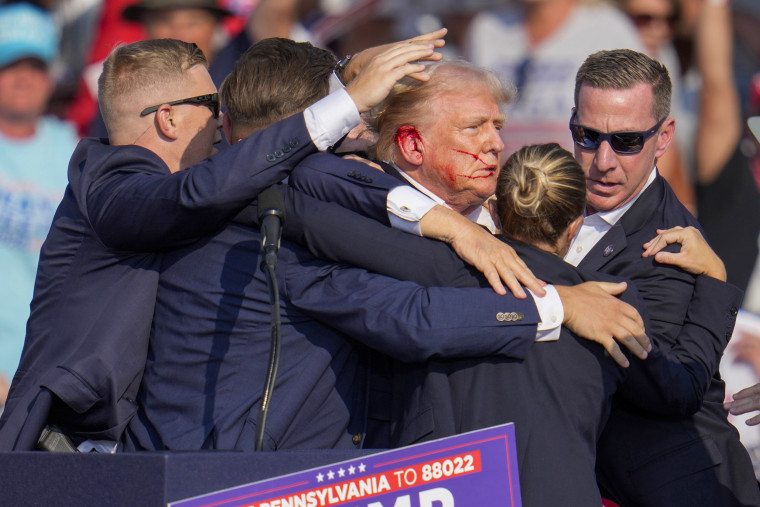
“There is no such thing as 100% security,” said Paul Eckloff, who served as a Secret Service agent for 22 years, including on details protecting Presidents George W. Bush, Barack Obama and Trump. “There will be vulnerabilities. You try to mitigate those as much as you possibly can. You monitor the things you can, and you plan for contingencies.”
Here’s how the Secret Service typically plans security for presidential candidate campaign events — along with the evident breakdowns in the plan at the Trump rally, according to the former agents.
ADVANCE TEAM DEPLOYS
Planning usually begins with the Secret Service sending an advance team to scout the venue and meet with the candidate’s staff three to five days before an event, the former agents said. The advance team typically consists of a mix of agents with assigned tasks, including a designated lead and site agent, as well as special operations and technical agents, said Anthony Cangelosi, a former agent-turned-criminal justice college lecturer who was assigned to security details on several stops during Democrat John Kerry’s presidential campaign in 2004.
Among other tasks, the advance team assesses the site for potential “vulnerabilities” and identifies the “assets” — meaning agents and equipment — needed to provide security, he said. The team also identifies where to stage a command post and where within the venue to assign agents, Cangelosi said.
The advance team designates the venue’s security perimeters, or zones, and assigns agents and supporting law enforcement personnel accordingly, he said. The inner perimeter is closest to the candidate or “protectee”; the middle perimeter, within the venue but farther away, is next; and then the outer perimeter.
The building the gunman scaled on Saturday was outside the inner security perimeter, though it was only about 148 yards from where Trump was speaking and well within range of the gunman’s rifle.
The building, owned by a glass research company, was noted as a “point of interest” in two advance security meetings, Butler Township’s manager said. Two people familiar with the planning told NBC News that the building was identified by the Secret Service as a vulnerability that required specific attention.
The Secret Service typically assigns the more senior agents in a candidate’s personal detail — or “shift” agents, as they’re called — to posts within the inner perimeter. The middle perimeter is often manned by agents who are pulled from local Secret Service field offices and assigned as “post-standers” responsible for securing specific and targeted areas, Cangelosi said.
The federal agency typically relies on local law enforcement officers, called “counterparts,” to assist with event security by assigning them to posts on the outer perimeter, the agents said.
Because of the Secret Service’s “limited resources and manpower, they have to rely on local counterparts to fulfill some of those outer perimeter posts,” said Michael Matranga, an agent for 12 years who served on several protective details safeguarding Obama.
A Secret Service spokesman has said that the agency designated the building the gunman used as being under the jurisdiction of local law enforcement, but a full picture has yet to emerge as to how the shooter was allowed to climb atop it to fire at Trump.
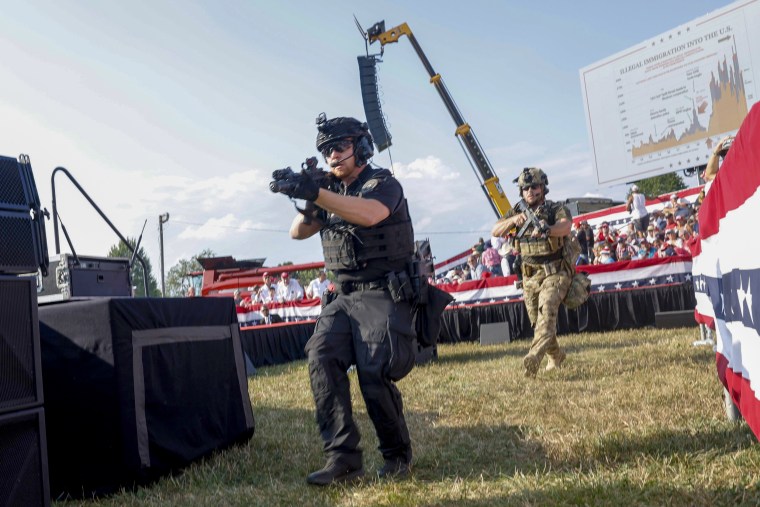
Secret Service Director Kimberly Cheatle told ABC News that local police were inside the building when the gunman scaled it, but a Secret Service official later told NBC News that a local SWAT team was inside another building in the same complex.
A former Secret Service official who spoke on the condition of anonymity said that even if there weren’t enough people to cover the building, there were alternatives — such as putting a bus or tarp in front of the building to block the line of sight to where Trump was speaking.
“It’s true there are finite assets, but you work within that,” the former official said. “Change the location of the rally, cover or block the roof, etc. This is just textbook.”
COUNTERSNIPER PROTOCOLS
Once threat assessments, venue vulnerabilities and agent assignments are drafted, the plan is shared with senior agents, each of whom can offer input and ask for changes before signing off, the agents said. Special operations and technical agents, such as the lead countersniper, separately draft their own plans for the event.
“They will have a countersniper advance, where a survey is done with plotting, mapping, pictures, quadrants, lines of sight, angles and lines of fire delineated,” Eckloff said.
Each countersniper is outfitted with rifles custom-built for them by the Secret Service, Eckloff said. Referred to as JARs — short for “just another rifle” — the weapons are “zeroed,” or set to ensure the accuracy of the sight, up to a day beforehand and can “neutralize a threat from as far as 1,000 yards away” — roughly the distance from the roof of the White House to base of the Washington Monument, he said.
A countersniper agent assigned to a campaign event typically is paired with another agent from the local field office who leads a “countersniper response team” tasked with checking out real-time issues that crop up during the event, Matranga said. If a countersniper assesses an immediate threat to life or bodily injury during the event, that agent can shoot to kill, he added.
“The policy at the Secret Service is we do not have a ‘green-light system’ where they need to seek authority,” Matranga said. “They do not need anybody’s permission to neutralize someone.”
But Cangelosi added that a countersniper likely won’t shoot unless they see a weapon, which might not readily be visible.
“If there’s no immediate threat, you’re not going to take a shot,” he said.
Cheatle released a statement after the shooting praising the countersniper team’s response.
“Secret Service personnel on the ground moved quickly during the incident,” she said, “with our counter sniper team neutralizing the shooter and our agents implementing protective measures to ensure the safety of former president Donald Trump.”
FINAL WALK-THROUGHS
In the hours or days before the event, senior agents conduct three to four walk-throughs of the venue to assess the security plan, with the lead agent, the site agent, the field office supervisor and the candidate’s detail supervisor all given an opportunity to review the protective strategy and call for changes, Matranga said. Several team briefings and one-on-one discussions also are held, with supervisors quizzing post-standers and local counterparts to ensure each clearly understands their objectives and areas of responsibility, the former agents said.
Post-standers are agents deployed to their posts at least several hours before an event begins and before a bomb squad sweep of the venue, the agents said.
“Once an individual is posted, they have to maintain the integrity of that sweep,” said Matranga, who owns and runs a Texas-based security firm, M6 Global Defense. “If you walk off that post, you’ve now compromised the entire site, because that sweep has already been conducted.”
As soon as screening posts with metal detectors are opened to the public — typically several hours before an event begins — “it’s game time,” Eckloff said.
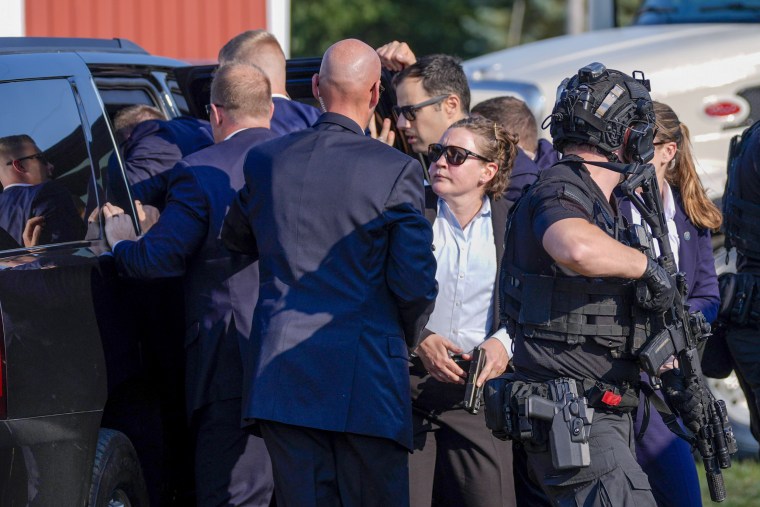
Planners typically designate a communications hub at each event site where supervisors field real-time reports over radio that can be immediately shared across multiple law enforcement radio frequencies as necessary.
On Saturday, the gunman was photographed as a suspicious person more than an hour before he opened fire, and the Secret Service was notified about 10 minutes before Trump took the stage, three sources familiar with a Senate briefing on Wednesday told NBC News. The details of the real-time communications between law-enforcement agencies aren’t yet known.
Every event gets its own confidential security plan shared only as needed, to make sure it doesn’t get out, Cangelosi said. Even if the same venue is used again during the campaign, the Secret Service plans security for each event from scratch, the agents said.
THE BLAME GAME
Breakdowns in security plans typically occur when someone “fails to execute their duties and responsibilities, or what we could call a weak link,” Cangelosi said. “When the chain is broken, it could be minor, it could be catastrophic.”
The attempt on Trump’s life has led to strong criticism of the Secret Service by law enforcement experts and politicians. It also set off a wave of finger-pointing across law enforcement agencies as to who was responsible for securing the building the gunman used.
The Secret Service initially blamed local authorities, without naming specific agencies. Officials in Butler Township have since pushed back, crediting their police officers who were assigned to traffic control with racing to confront the gunman first, and the Secret Service has praised the officers who “ran towards danger.”
One former agent who asked not to be named said the Secret Service “is always in charge” at such events “no matter what anyone says.”
“They make the plan,” the agent said. “Locals need to follow it, but it’s up to [the Secret Service] in every way to make sure that happens.”
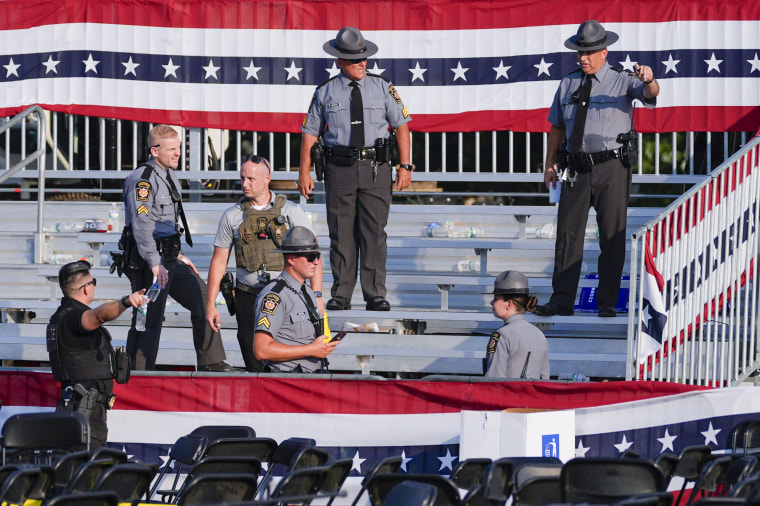
Another agent still active with the Secret Service described security at such events as more of a “partnership,” but agreed responsibility for the plan is ultimately the agency’s.
The House Oversight Committee subpoenaed Cheatle to testify at a hearing next week as part of an investigation into the assassination attempt. The Department of Homeland Security’s Office of Inspector General also announced this week that it is reviewing “the process implemented” by the Secret Service to secure the event.
GOING FORWARD
While no plan is perfect, Eckloff said the Secret Service’s advance planning techniques for campaign events represent a “flexible and adaptive mission model” that quickly incorporates lessons learned from events that go wrong.
In an interview with CNN on Tuesday, Cheatle committed to making changes to Secret Service policies if needed based on an internal review.
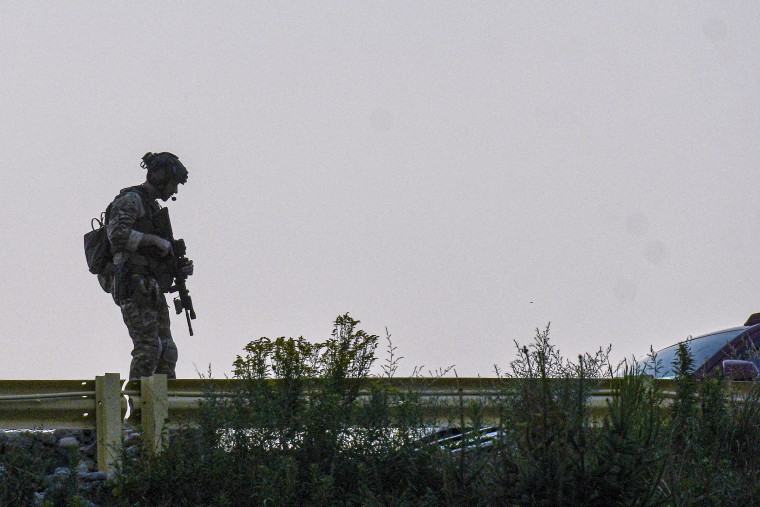
Eckloff predicts that the failures at the Trump rally will lead to “a historical sea change” in terms of how security is done going forward.
“I do think you’ll see a huge effect,” said Eckloff, who surmised that immediate changes with the Secret Service’s security at campaign events are likely to include extended security perimeters and more manpower.
“They’re certainly not going to wait for the outcome of a congressional inquiry to make adjustments,” he said.







